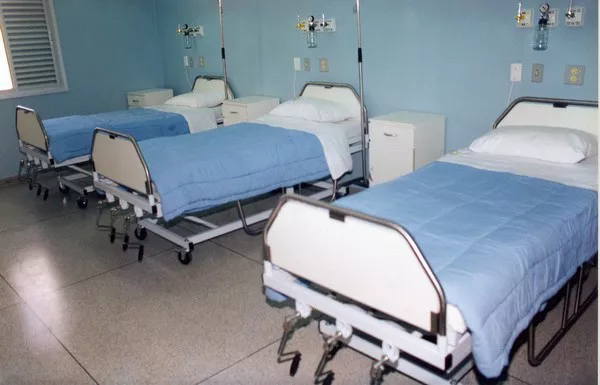1. Explanation of Brain Swelling After Stroke:
Cerebral edema, commonly known as brain swelling, is a serious complication that can occur after a stroke. When a stroke happens, blood flow to a part of the brain is disrupted, leading to damage to brain cells. This damage triggers a cascade of events, including inflammation and fluid accumulation, which can result in swelling.
Types of swelling:
There are several types of edema that can occur after a stroke, including cytotoxic edema and vasogenic edema. Cytotoxic edema involves the swelling of brain cells themselves, while vasogenic edema involves the leaking of fluid from blood vessels into the surrounding brain tissue.
Timeline:
Brain swelling typically peaks within the first few days after a stroke and then gradually subsides over weeks or even months. However, the timeline can vary depending on factors such as the severity of the stroke, the location of the damage, and the overall health of the individual.
Factors influencing duration:
Several factors can influence how long brain swelling lasts after a stroke. A severe stroke with extensive damage is more likely to result in prolonged swelling. The location of the stroke can also impact the duration of swelling, as swelling in certain areas of the brain may take longer to resolve. Additionally, individual factors such as age and overall health can affect the body’s ability to recover from brain swelling.
2. Symptoms and Concerns:
Common symptoms of brain swelling after a stroke include headache, confusion, nausea, and vision changes. These symptoms can vary in severity depending on the extent of the swelling and the areas of the brain affected.
Monitoring and management:
Medical professionals monitor brain swelling through imaging tests such as MRI or CT scans. These tests allow doctors to visualize the extent of the swelling and track changes over time. Management of symptoms may involve medications to reduce inflammation and swelling, as well as supportive care to address any complications that arise.
Potential complications:
Complications of brain swelling can include increased intracranial pressure (ICP) and herniation, where brain tissue is forced out of its normal position. These complications can be life-threatening if not promptly addressed. However, medical interventions such as medications to reduce ICP and surgical procedures to relieve pressure on the brain can help prevent these complications from occurring.
3. Treatment and Recovery:
Treatment options for brain swelling after a stroke may include medications to reduce inflammation and swelling, such as corticosteroids or diuretics. In severe cases, surgery may be necessary to remove excess fluid or relieve pressure on the brain. Supportive care, including monitoring vital signs and providing fluids and nutrition, is also important in managing brain swelling.
Recovery process:
The recovery process from brain swelling after a stroke can vary widely depending on the individual and the severity of the stroke. Some people may experience significant improvement in symptoms over time, while others may have ongoing challenges. Rehabilitation plays a crucial role in the recovery process, helping individuals regain lost function and improve their quality of life.
Rehabilitation:
Rehabilitation programs tailored to the specific needs of stroke survivors can help improve mobility, speech, and cognitive function. These programs may include physical therapy, occupational therapy, speech therapy, and cognitive rehabilitation. The goal of rehabilitation is to maximize independence and quality of life for individuals affected by stroke and brain swelling.
4. Reassurance and Support:
It’s important for individuals and their loved ones to know that brain swelling is a known complication of stroke and that medical professionals are equipped to manage it effectively. While the road to recovery may be challenging, there is hope for improvement with proper treatment and rehabilitation.
Positive outlook:
Many people are able to make significant progress in their recovery from stroke and brain swelling with time and support. By working closely with healthcare providers and participating in rehabilitation programs, individuals can regain lost function and achieve a better quality of life.
Support resources:
There are many resources available to support individuals affected by stroke and brain swelling, including stroke support groups, rehabilitation services, and online forums. These resources can provide valuable information, emotional support, and practical assistance to help individuals and their families navigate the challenges of recovery.
Conclusion
In conclusion, brain swelling is a serious complication that can occur after a stroke, but with prompt medical intervention and appropriate treatment, many individuals are able to make significant strides in their recovery. By understanding the causes, symptoms, and treatment options for brain swelling, individuals can take proactive steps to manage this complication and work towards a positive outcome.
FAQs
What are good signs after a stroke?
Positive signs after a stroke include improvement in speech, movement, and cognitive function. Regaining strength and coordination, increased alertness, and the ability to perform daily activities independently are also good indicators of recovery.
What are the signs of decline after a stroke?
Signs of decline after a stroke may include worsening weakness or numbness on one side of the body, increased difficulty with speech or understanding language, sudden severe headache, dizziness, or loss of balance. Any sudden change in neurological function should be promptly evaluated by a medical professional.
Can you live 20 years after a stroke?
Yes, it’s possible to live 20 years after a stroke. However, this depends on various factors such as the severity of the stroke, the individual’s overall health, access to medical care, and lifestyle factors like diet and exercise. With proper medical management and lifestyle modifications, many stroke survivors can live long and fulfilling lives.
Related topics:
- Understanding Heat Exhaustion & Diarrhea
- ESRD: Understanding Life Expectancy and Quality of Life
- Understanding Heat Exhaustion Fever and its Duration


